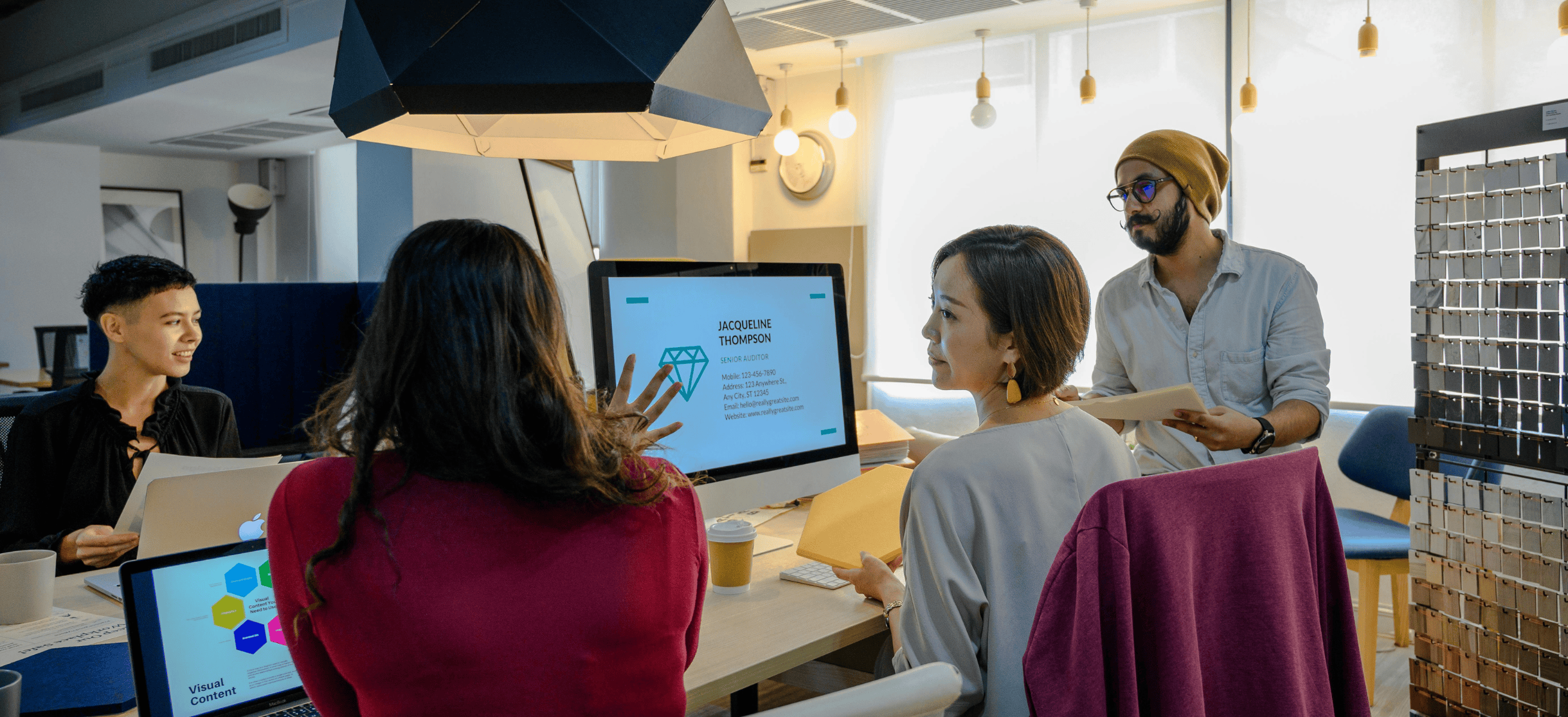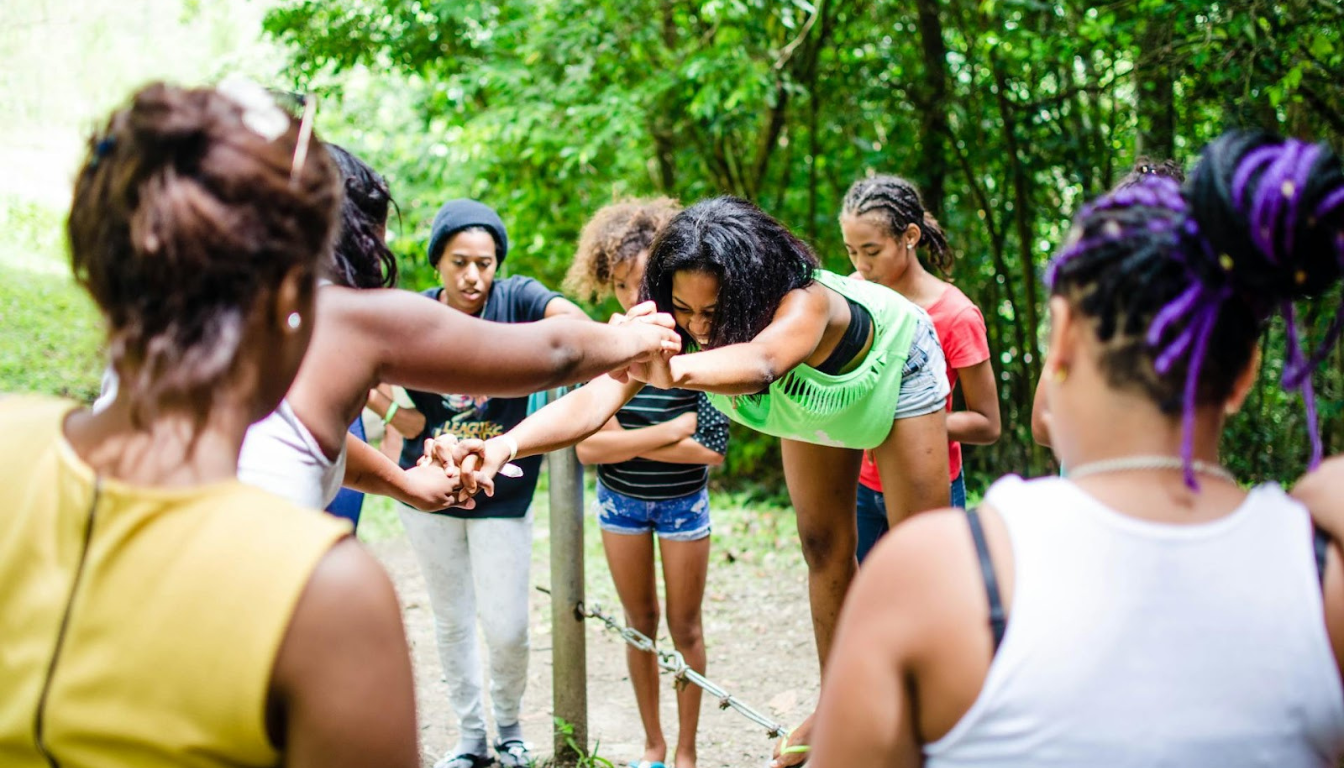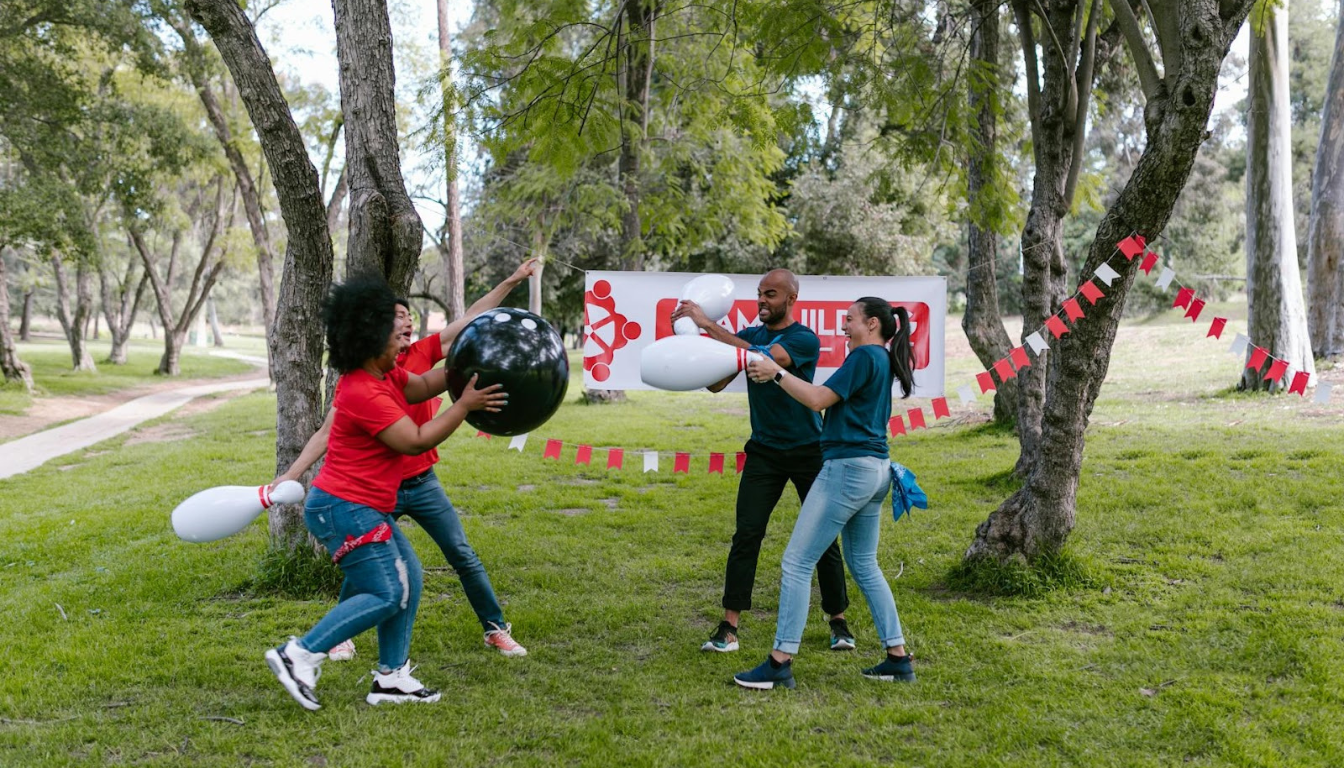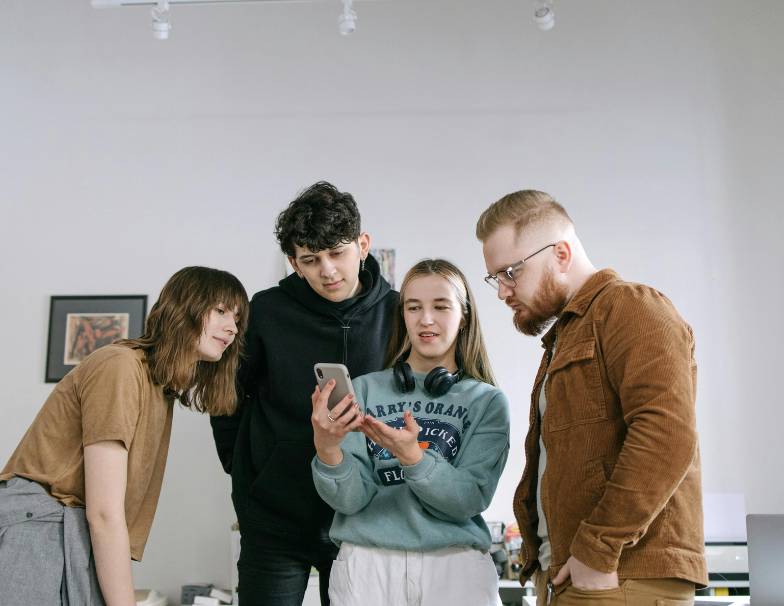Top Teamwork Activities for Small Groups to Boost Collaboration in 2025

Looking for teamwork activities for small groups? This guide lists exercises that improve collaboration, communication, and problem-solving.
Key Takeaways
- Teamwork activities enhance collaboration, trust, and communication, leading to improved team performance and morale.
- Icebreaker and problem-solving activities foster personal relationships and innovative thinking, strengthening team dynamics.
- Effective team building events require clear objectives, relevant activities, and success measurement to ensure alignment with business goals.
Importance of Teamwork Activities for Small Groups

Team building activities play a vital role in enhancing team collaboration, trust, and communication skills. When team members engage in these activities, they learn to value communication and partnership, which are essential for a successful team. Team building exercises allow employees to step away from their usual tasks and discover new ways to solve problems and collaborate effectively.
Effective team building activities strengthen team connections, boost happiness, and improve overall company culture. These activities are designed to build connections, create bonds, and improve teamwork, ultimately fostering a sense of trust among team members. Encouraging honesty around goals and sharing experiences during team activities can significantly improve overall trust and understanding within the team.
As team members collaborate closely over time, they develop effective communication skills and a better understanding of each other’s perspectives. This close collaboration allows for improved communication and stronger relationships, which are crucial for a team's success. By investing in team building activities, organizations can create a more cohesive and collaborative work environment, leading to increased morale and overall team performance.
Icebreaker Activities to Kickstart Engagement

Icebreaker activities are designed to build personal relationships between workers and enhance connections among team members. These activities serve as a fun way to kickstart engagement and encourage team members to open up and interact with one another. By participating in icebreakers, team members can break the initial barriers and create a more comfortable and collaborative environment.
In this section, we’ll explore three specific icebreaker activities that can help your team bond and improve communication skills. These activities include “Two Truths and a Lie,” “Quick-fire Trivia,” and “What Do We Have in Common?”
Each of these activities is designed to promote interaction, trust, and familiarity among team members, setting the stage to encourage teamwork for effective teamwork.
Two Truths and a Lie
The “Two Truths and a Lie” activity encourages team members to share personal information, fostering trust and familiarity within the group. During this activity, each participant takes turns sharing three statements about themselves: two truths and one lie. The rest of the group then tries to guess which statement is the lie. This game allows team members to reveal personal insights, enhancing trust and open communication within the team.
Typically lasting between 15 to 30 minutes and involving 5-8 participants, this activity requires no special equipment, making it easy to implement in any setting. By engaging in “Two Truths and a Lie,” team members can build familiarity with one another while promoting a fun and interactive atmosphere.
Quick-fire Trivia
Quick-fire Trivia encourages two teams to engage in friendly competition while answering diverse questions rapidly. In this activity:
- Teams are divided into smaller groups of two to four people.
- Participants take part in 2-minute rounds of trivia.
- Trivia questions cover various topics such as history, art, and science.
This format allows new team members to quickly bond over shared knowledge and interests with the entire team and other members, fostering a strong team connection. When a team member writes, it enhances this bonding experience.
After the trivia rounds, team members can discuss their performance and strategize improvements, further promoting teamwork and collaboration. Quick-fire Trivia is a fun way to engage team members, enhance quick thinking, and foster a sense of friendly competition within the team.
What Do We Have in Common?
The “What Do We Have in Common?” activity promotes interaction by encouraging participants to discover shared traits and interests. Suitable for groups consisting of 20-50 people, this activity typically lasts 40-60 minutes and involves participants finding 5-10 things they have in common. This process allows for deeper connections and a better understanding of each other.
One variation of this activity is the “Cross the Circle” game, where participants respond to posed questions by crossing a circle if the question applies to them. This activity can also be conducted virtually, making it an excellent option for remote teams to interact and bond.
Creative Thinking Exercises for Small Groups

Creative thinking exercises are designed to stimulate innovative thinking and allow team members to explore unconventional solutions. These activities encourage creativity, improve communication, and boost team morale by providing a fun and engaging way to tackle challenges together. Creative thinking exercises encourage team members to explore novel solutions and innovate beyond their routine tasks, sparking their creative juices flowing.
In this section, we’ll explore three specific creative thinking exercises: “The Marshmallow Challenge,” “Build a Boat,” and “Innovators’ Auction.” Each of these activities is designed to promote creative problem-solving and teamwork, helping your team develop strategic thinking and collaboration skills.
The Marshmallow Challenge
The Marshmallow Challenge encourages teams to collaborate under pressure to create a freestanding structure. The challenge involves:
- Using 20 sticks of spaghetti
- Using one marshmallow
- Using one yard of string
- Using tape
The objective is to build the tallest structure possible with the marshmallow on top. This activity tests how creatively teams work together and promotes innovative problem-solving.
Typically lasting between 20-30 minutes, although the total time can extend to a few minutes to 45-60 minutes, the Marshmallow Challenge is a fun activity that fosters teamwork and creative thinking. This exercise helps team members develop their ability to collaborate effectively under pressure.
Build a Boat
In the “Build a Boat” activity, teams must:
- Utilize limited resources to construct a boat that can float.
- Use building materials such as cardboard, tape, and plastic sheets.
- Work together to create a functional boat within a set time frame.
This activity emphasizes resource utilization and creative problem-solving. The recommended group size for the Build a Boat activity is 5-10 people per team, and participants are expected to commit 45-60 minutes to the activity. This exercise enhances collaboration skills while providing an enjoyable experience.
Innovators' Auction
The Innovators’ Auction promotes strategic decision-making as teams bid on materials to create an invention. Designed for teams of 5 to 8 people, this activity encourages creativity and resource management. Participants must carefully allocate their resources and collaborate to develop the best possible invention.
Typically taking 30 to 45 minutes to complete, the Innovators’ Auction is an engaging and competitive activity that fosters innovative thinking and teamwork. This exercise helps team members develop their strategic thinking skills while encouraging creativity.
Problem-Solving Activities to Enhance Collaboration
Problem-solving activities can significantly boost teamwork and collaboration skills by allowing team members to break away from routine tasks and find innovative approaches to challenges. These activities emphasize the importance of trust, communication, and creative problem-solving, helping teams develop stronger bonds and improved working practices.
In this section, we’ll explore three specific problem-solving activities: “Egg Drop Challenge,” “Minefield,” and “Bridge Build.” Each of these activities is designed to enhance collaboration, trust, and communication within the team, leading to more effective problem-solving and teamwork.
Egg Drop Challenge
The Egg Drop Challenge is an engaging activity where teams collaborate to create a structure that can protect a falling egg. Using materials like straws and tape, participants must design a protective structure that will withstand a drop, keeping the egg intact. This activity emphasizes creative problem solving and teamwork, as teams must brainstorm and execute their designs effectively.
The Egg Drop Challenge boosts collaboration skills and fosters innovative solutions through a fun and challenging task. This activity typically lasts between 30-60 minutes, making it a great addition to any team building event.
Minefield
The Minefield activity is designed to enhance trust, communication, and effective listening skills between partners. It involves the following steps:
- Participants are divided into pairs.
- One partner is a blindfolded person.
- The other partner provides verbal guidance.
- The blindfolded partner navigates through a “minefield” of small objects.
This activity requires participants to rely on each other and communicate effectively to achieve the objective.
Suitable for groups of 8-16 people, the Minefield activity typically lasts around 45-50 minutes. This exercise helps team members build trust and communication skills, resulting in stronger work connections and partnerships and better collaboration.
Bridge Build
The Bridge Build activity promotes teamwork through challenges that require non-verbal communication and collaboration. Key aspects of this activity include:
- Team members are prohibited from speaking, encouraging the use of non-verbal cues.
- Participants work together to build a bridge using provided materials.
- The activity emphasizes coordination and problem-solving skills.
Typically taking 20-30 minutes to complete, the Bridge Build activity is a fun and engaging way to enhance teamwork and communication within the group. This exercise helps team members develop their ability to collaborate effectively without relying on verbal communication.
Fun Team Building Games to Boost Morale

Fun team building games are an excellent way to boost morale and enhance team dynamics. When organizational leaders invest in team-building activities, it can noticeably boost employee morale and confidence. These games provide a fun and engaging way for team members to bond, relax, and enjoy each other’s company, ultimately leading to a more cohesive and collaborative team.
In this section, we’ll explore three specific fun team building games: “Human Knot,” “Office Trivia,” and “Scavenger Hunt.” Each of these games is designed to promote team bonding, friendly competition, and overall team spirit, making them perfect for boosting morale and enhancing team dynamics.
Human Knot
The Human Knot activity involves the following:
- Requires 7 or more participants, ideally between 8-16 people for effective interaction.
- Participants stand in a circle.
- Each participant holds hands with two different people across from them, creating a “knot.”
- The objective is to untangle themselves without letting go of each other’s hands.
- Success relies on teamwork and communication to achieve the goal.
Typically lasting around 20-30 minutes, the Human Knot activity enhances teamwork and communication as participants work closely together to untangle themselves. This exercise helps team members develop their ability to collaborate effectively and build stronger connections within the group.
Office Trivia
Office Trivia is designed for 5 to 30 participants and typically lasts 30 to 45 minutes. In this activity, teams are split into even groups to compete in answering a list of lighthearted questions about the office and coworkers. This format encourages engagement, shares knowledge, and reveals unexpected facts about colleagues, promoting bonding and team spirit.
Office Trivia offers a fun and interactive opportunity for team members to learn more about each other and the workplace. This activity fosters a sense of camaraderie and friendly competition, making it an excellent choice for boosting morale and enhancing team dynamics.
Scavenger Hunt
The objective of the scavenger hunt is to collect objects based on a list provided to the participants. Key details include:
- Suitable for groups of 5-50 participants
- Typically lasts between 20 to 30 minutes
- Participants generally have 2 minutes to collect each required item
- Can be organized for both remote and in-person teams
- A versatile option for team building events
A scavenger hunt provides a fun and everyone’s competitive spirit activity that encourages teamwork and quick thinking. This activity encourages friendly competition and provides an opportunity for team members to bond over shared challenges and successes.
Virtual Team Building Activities for Remote Teams

With the rise of remote work, virtual team building activities have become essential for maintaining team cohesion and morale. These activities are designed to engage and connect team members through online platforms, ensuring that remote teams can still enjoy the benefits of team building. Virtual team building activities help remote team members strengthen connections, enhance communication, and boost collaboration.
In this section, we’ll explore three specific virtual team building activities: “Online Escape Room,” “Virtual Coffee Breaks,” and “Remote Office Trivia.” Each of these activities is designed to promote engagement, teamwork, and bonding among remote team members.
Online Escape Room
The virtual escape room is specifically designed for remote teams, providing an engaging and interactive way to promote teamwork and critical thinking skills. In this activity, teams work together to solve puzzles and riddles to “escape” from a virtual room within a set time frame. This format encourages collaboration, communication, and creative problem-solving.
An online game escape room offers remote team members a fun game and challenging way to improve their teamwork skills. This activity is an excellent way to foster a sense of camaraderie and teamwork among remote teams.
Virtual Coffee Breaks
Virtual coffee breaks serve as an informal setting where remote team members can relax and connect over conversations that mimic traditional coffee break discussions. These breaks encourage team bonding by allowing members to share personal stories, discuss interests, and build relationships outside of formal work discussions.
Incorporating regular virtual coffee breaks into remote work promotes a sense of belonging and boosts morale, ultimately enhancing overall team collaboration and productivity.
Activities during virtual coffee breaks can include online games like trivia or team quizzes that engage team members and strengthen their collaboration within virtual teams.
Remote Office Trivia
Remote Office Trivia is a quiz game focused on workplace-related questions, promoting knowledge sharing and bonding among team members. This activity engages team members through online platforms, allowing remote teams to participate in a fun and interactive way. By answering trivia questions about the office and coworkers, team members can learn more about each other and strengthen their connections.
Engaging in virtual trivia games leads to improved collaboration, as team members learn about each other while having fun. This activity is an excellent way to promote engagement and bonding among remote team members, creating a more cohesive and collaborative team environment.
Reflective Activities to Strengthen Team Dynamics
Reflective activities are essential for nurturing stronger relationships among employees over time. These activities encourage team members to reflect on their experiences, share insights, and build deeper connections. Reflective activities help teams deepen their understanding of each other, improve communication, and create a more collaborative and supportive environment.
In this section, we’ll explore three specific reflective activities: “Memory Wall,” “Trust Battery,” and “Feedback Circle.” Each of these activities is designed to promote trust, openness, and continuous improvement within the team.
Memory Wall
The Memory Wall activity aims to help everyone remember special moments in the office. It also highlights the impact these moments have had on the team. Participants write down meaningful memories on post-its and place them on a wall, creating a visual representation of shared experiences. This activity fosters team bonding and appreciation of growth by allowing team members to reflect on their journey together.
The small group size for the Memory Wall activity should be between 8 to 20 people, and the typical time commitment is 20 to 30 minutes. This activity helps team members strengthen their connections and create a more cohesive team.
Trust Battery
The Trust Battery activity focuses on self-reflection, honest discussions, and trust building within the team. Participants rate their level of trust in each team member on a scale from 0 to 100, then discuss the reasons behind their ratings. This activity encourages open and honest communication, helping team members understand each other’s perspectives and build stronger relationships.
Suitable for 4 or more participants, the Trust Battery activity typically lasts between 20 to 40 minutes. This activity enhances trust and collaboration, resulting in a more cohesive and effective team.
Feedback Circle
The Feedback Circle activity encourages team members to share constructive feedback with one another, promoting trust and openness within the team. Participants sit in a circle and take turns providing feedback, focusing on both positive aspects and areas for improvement. This activity creates an environment where team members feel comfortable sharing their thoughts and ideas.
The Feedback Circle activity fosters a culture of continuous improvement and collaboration within teams. This exercise helps team members build stronger connections and enhance their overall performance.
Planning Effective Team Building Events
Planning effective team building events is crucial for achieving the desired outcomes and enhancing team dynamics. These events should align with specific business goals to maximize their impact. By carefully planning and organizing team building events, organizations can create opportunities for team members to bond, collaborate, and develop essential skills.
In this section, we’ll explore the key components of successful team building events, including setting clear objectives, choosing the right activities, and measuring success. By following these guidelines, you can ensure that your team building events are engaging, impactful, and aligned with your organization’s goals.
Setting Clear Objectives
Defining clear objectives for team building activities ensures alignment with business goals and helps focus the team’s efforts. By setting specific, measurable goals, organizations can create a shared vision and purpose for team building events. This approach helps teams understand the intended outcomes and work together more effectively to achieve them.
Creating a shared visual resource that outlines the team’s purpose and culture can also help reinforce these objectives and provide a reference point for future activities. Clear objectives ensure that team building activities are purposeful and aligned with your organization’s goals.
Choosing the Right Activities
Choosing the right activities for team building events is essential for ensuring engagement and inclusivity. Activities that reflect team interests and promote deeper bonding or alignment are more likely to be successful and enjoyable for participants. Additionally, considering the context of the activity, such as indoor team building activities or outdoor settings, can influence the selection of team building exercises.
Choosing inclusive activities that engage everyone creates a more positive and collaborative team building experience, encouraging collaboration. Ensuring that activities are tailored to the needs and interests of your team will lead to higher participation and enjoyment.
Measuring Success
Measuring the success of team building events is crucial for assessing their impact and identifying areas for improvement. Post-event surveys and feedback from participants are key tools for evaluating the effectiveness of team building activities. Collecting feedback from team members provides valuable insights into successful aspects and areas for improvement in future events.
Tracking participation rates and observing changes in team dynamics can also help gauge the level of engagement and success of the event. Establishing metrics before the event helps in evaluating whether intended goals were met, ensuring that your team building activities are impactful and aligned with your organization’s objectives.
Summary
Team building activities are essential for fostering collaboration, trust, and communication within small groups. By incorporating a variety of activities, such as icebreakers, creative thinking exercises, problem-solving challenges, and fun games, organizations can create a more cohesive and effective team. Reflective activities and careful planning of team building events further enhance team dynamics and ensure that these activities align with business goals.
As we move forward into 2025, the importance of team building activities will continue to grow. By investing in these activities, organizations can create a positive and collaborative work environment that promotes team spirit and overall success. Start implementing these activities today and watch your team thrive. For companies seeking streamlined solutions to coordinate such events with minimal administrative burden, platforms like Offsite are increasingly becoming part of the broader conversation.
FAQs
- What are the benefits of team building activities?
Team building activities significantly boost morale, enhance trust, and improve communication among team members, ultimately fostering better collaboration and a positive company culture. Engaging in these activities helps create strong connections within the team.
- How can icebreaker activities help my team?
Icebreaker activities foster personal relationships among team members, enhancing connections and facilitating a collaborative environment for better teamwork. By engaging in these activities, teams can improve communication and collaboration.
- What are some effective virtual team building activities for remote teams?
Effective virtual team building activities such as Online Escape Rooms, Virtual Coffee Breaks, and Remote Office Trivia can significantly enhance engagement and collaboration among remote team members. Implementing these activities will foster stronger connections within your team.
- How do I choose the right team building activities for my team?
Select team-building activities that align with your team's interests and promote inclusivity, ensuring they foster full engagement and are relevant to your business goals. This approach will enhance team cohesion and effectiveness.
You may also like
Unique spaces for your next offsite
Find distinctive venues for your upcoming corporate retreat.
Stay Updated with Our Insights
Get exclusive content and valuable updates directly to you.







